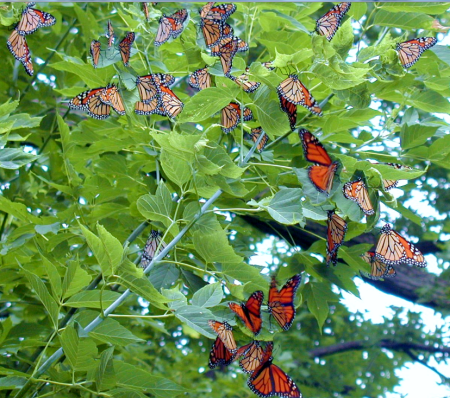Click below to listen to my 2 min. Garden Bite radio show: Monarch butterflies and migration
Audio PlayerThe annual Monarch migration is beginning. And for much of the summer I saw plenty of posts on social media of folks raising Monarchs at home. It’s amazing! (Special thanks to my neighbor, Connie Erickson, for her devotion to these beautiful little masterpieces)
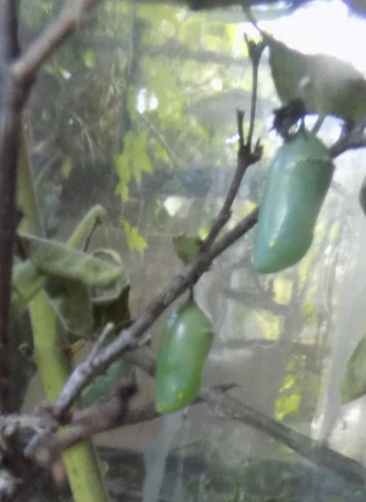
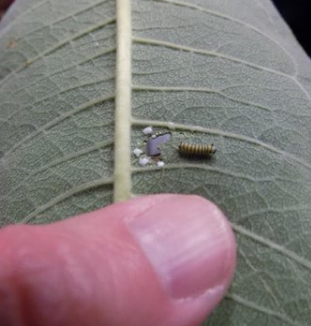
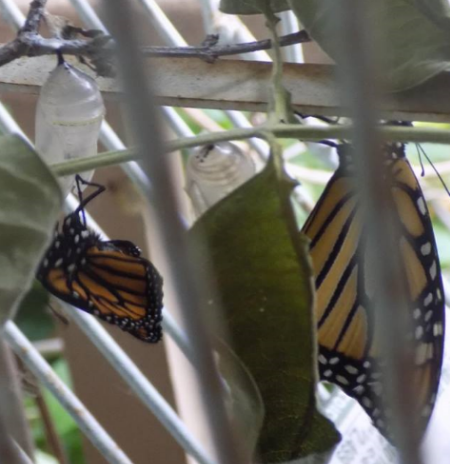
Nearby, a college arboretum released hundreds of Monarchs.
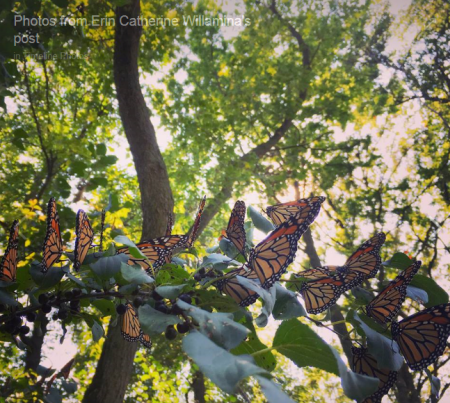
While their numbers are still well below what we’d like to see, it would appear that folks are making some good choices and trying to restore some habitat as well as cut back on chemicals. That’s not scientific information but my own observations.
In all the world, no butterflies migrate like the Monarchs of North America. They travel much farther than all other tropical butterflies, up to three thousand miles. They are the only butterflies to make such a long, two way migration every year. Amazingly, they fly in masses to the same winter roosts, often to the exact same trees.
More information at Wisconsin DNR – Minding our Monarchs
Wisconsin DNR on Monarch news
Not all monarchs migrate, it depends when they’re born. Adults live about 2 to 6 weeks unless they’re born near the time to migrate, then they can live up to 7 months.
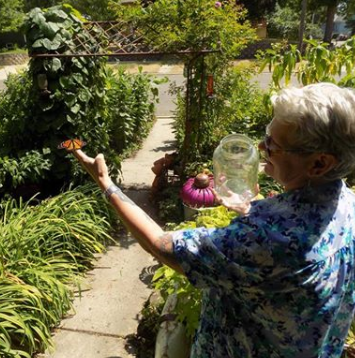
Monarch larvae feed exclusively on milkweed, that’s why it’s so critical to conserve their habitat. There is a certain toxin inside the milkweed that the larvae can ingest and they use it as a defense against predators. It makes them sick.

Monarchs also lay their eggs on milkweed. With shifting land management practices, we’ve lost much milkweed from the landscape but folks are working on it and so are gardeners.

The Monarch Highway aka I-35 has led to 6 states collaborating to create habitat for monarchs.
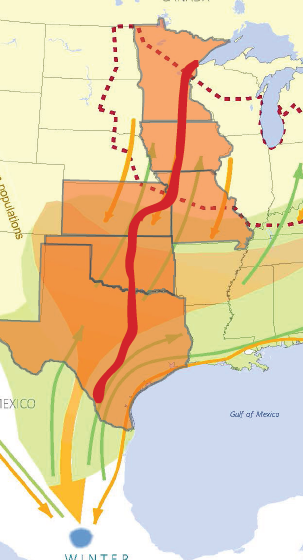
There are several types of milkweed, butterfly weed is one of them. Planting a butterfly garden is a great step home gardeners can do.
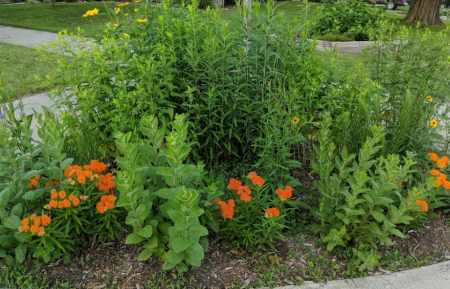
Planting native species, such as common milkweed, is a plus. The Minnesota DNR has a list of native plant suppliers
